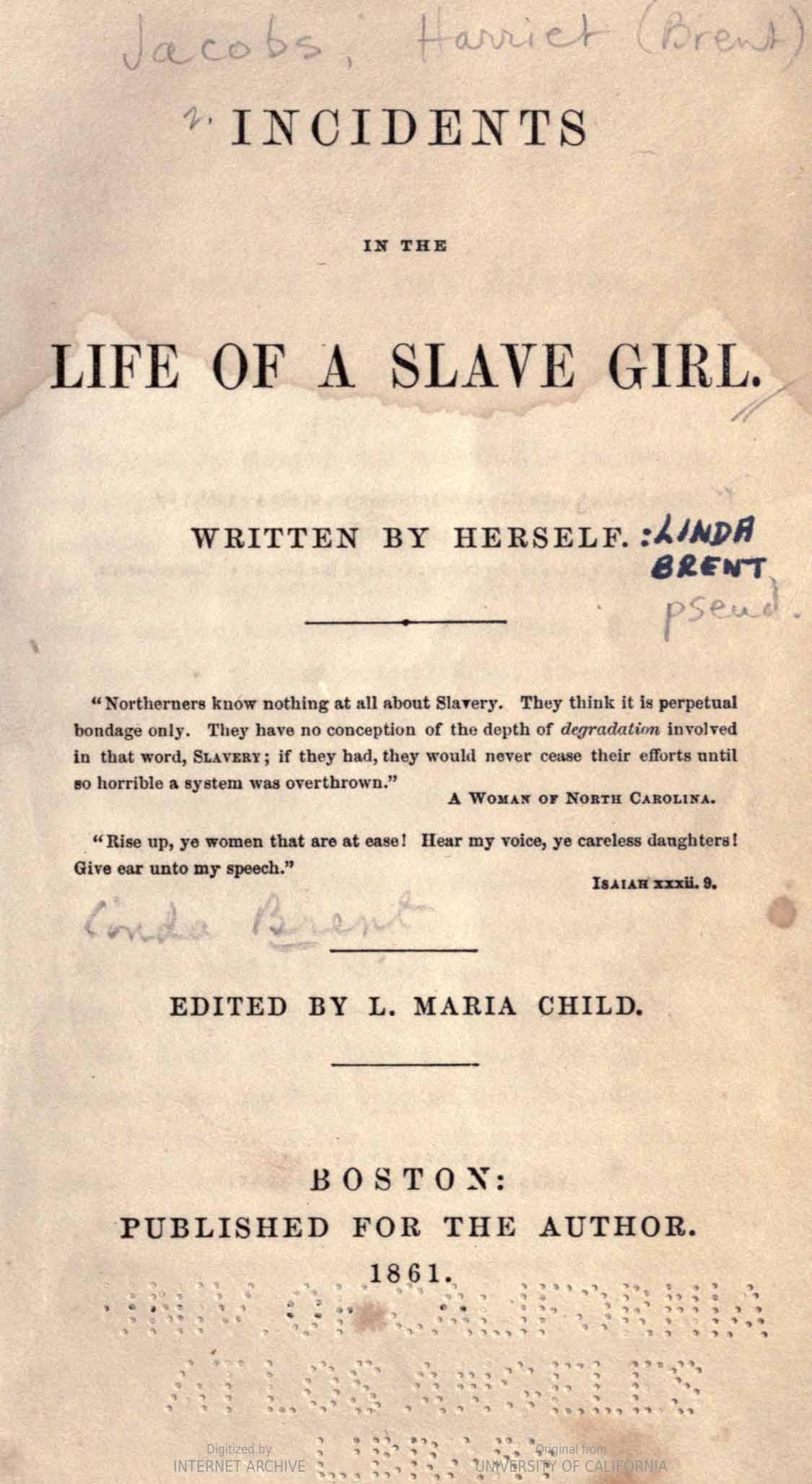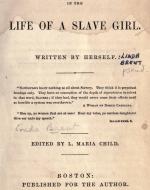Created by Alexis Brown on Mon, 04/29/2024 - 22:30
Description:
The pictured title page is that of Harriet Jacobs's autobiography Incidents in the Life of a Slave Girl. Published in 1861, this narrative was an accomplisment that showed the strength that Jacob's possessed. At only the beginning of the Civil War, this black American women had the oppurtunity to share her story, which not many slaves, not many women, had the same oppurtunity. This just goes to show how women are able to succumb the hardships and produce what they feel the nation needs to hear. Sarah Way Sherman's "Moral Experience in Harriet Jacobs's Incidents in the Life of a Slave Girl" states, "While the thrust of Incidents in the Life comes from a unequivocal denunciation of an evil system, its tension comes from a painful confrontation with moral conflict and moral ambiguity." Jacobs effectively combines a strong crticism of injustice with an exploration of moral complexity, resulting in a compelling and thought-provoking narrative.
Jacobs narrative documented the experiences of a woman enslaved in the South. Through Jacobs' compelling storytelling, readers are confronted with the brutal realities of slavery, particularly its impact on women and families. Jacobs' account is a powerful statement of the institution of slavery, exposing the lengths to which individuals would go to pursue freedom and protect their loved ones. Her narrative not only serves as a historical document but also as a testament to the resilience and courage of those who fought against oppression.
The first line of Jacob’s autobiography is, “I was born a slave; but I never knew it till six years of happy childhood had passed away.” With this, Jacobs goes on to explain how she was shielded from the world of being purchased as “merchandise.” It was not until Jacob’s mother passed for her to learn that she was indeed a slave and a piece of “merchandise” for the white men and women to collect and use. Jacobs' experiences shown within the literary text is a testimony to not only herself, but to women in general. Through the eyes of men, throughout history, they were seen as "merchandise." To be able to share how she felt, to write what she felt is the strength and the resilence that women possess.
According to documenting the American South, “Under the regime of James and Maria Norcom, Jacobs was introduced to the harsh realities of slavery. Though barely a teenager, Jacobs soon realized that her master was a sexual threat.” Many slaves were subjected to sexual beings for their “masters” to use, and Jacob’s was no different. Jacob’s ability to use what one of her masters taught her to do to share her story, and to share the story of many other slaves, even indirectly, is a great act of resilience. An astonishing woman, whose strength and courage allowed her to free herself from the hands of evil, Jacobs embodies the strong will that many women possess. Through her autobiography, we were shown a new light on slavery in the South, particularly the cruelty and sexual abuse that women and their families face.
Works Cited
“Harriet A. Jacobs (Harriet Ann), 1813-1897.” Documenting the American South, docsouth.unc.edu/fpn/jacobs/bio.html. Accessed 29 Apr. 2024.
“Incidents in the Life of a Slave Girl. Written by Herself.” Encyclopedia Virginia, 25 July 2023, encyclopediavirginia.org/title-page/.
Jacobs, Harriet. “Incidents in the Life of a Slave Girl.” University of Iowa, 2003, gel.sites.uiowa.edu/sites/gel.sites.uiowa.edu/files/wysiwyg_uploads/jacobs_incidents_in_the_life.pdf.


